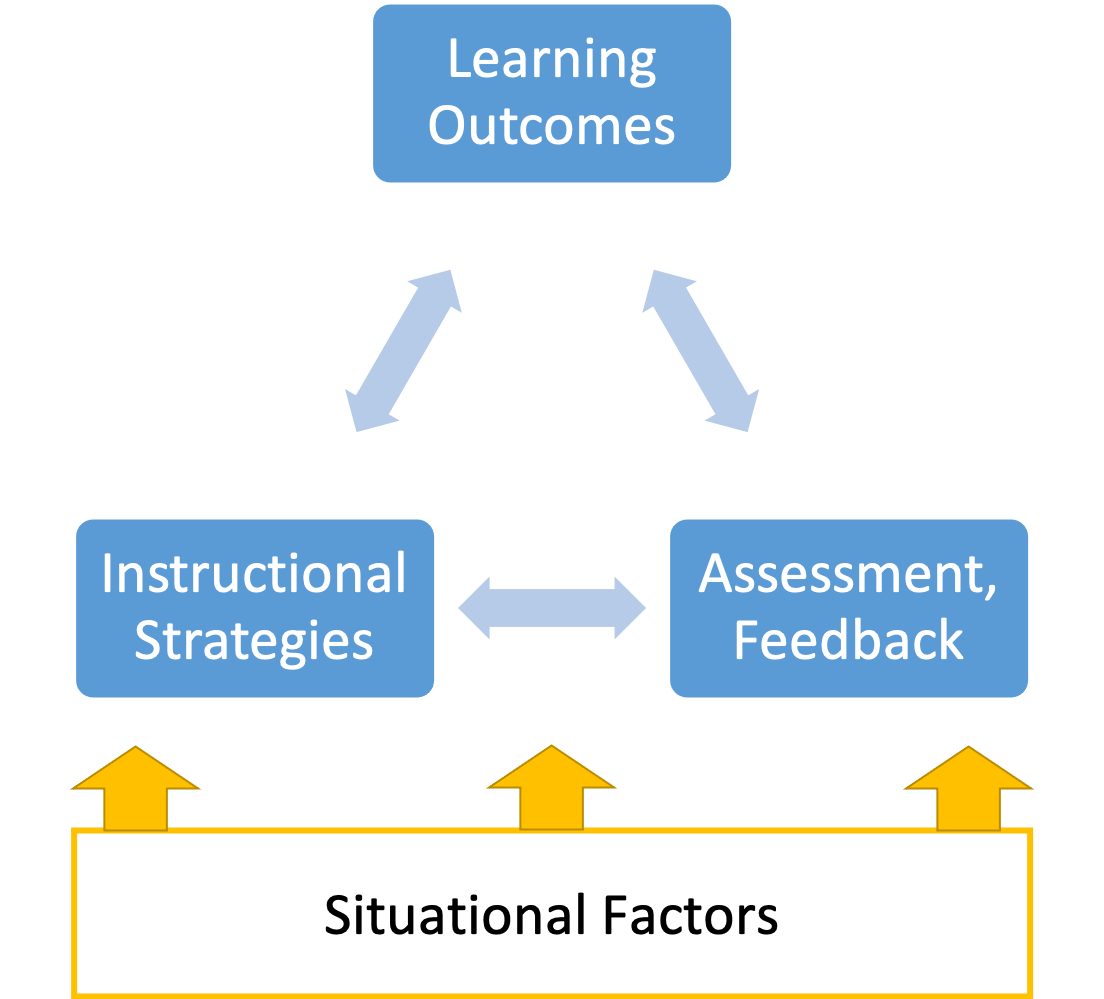Teaching Resources: 8 Steps for Course Planning
From crafting purposeful assessments to setting up your onQ, these “Eight Steps for Course Planning” will support instructors in creating or recreating their courses. This resource outlines a planning process that helps to ensure that the course design aligns with its learning outcomes, while helping to establish a rhythm for teaching and learning for every week.
Teaching Resources: 8 Steps for Course Planning (PDF, 189KB)
Backward Design
 Course Design applies models of backwards design and constructive alignment to offer a series of steps for designing new courses or adapting existing ones. Backwards design is all about starting with the end goal in mind: what you want your students to be able to know, do or value as they finish the course. Then designing a curriculum that supports that performance. Constructive alignment views course design as an interconnection between learning outcomes, assessments, and instructional strategies.
Course Design applies models of backwards design and constructive alignment to offer a series of steps for designing new courses or adapting existing ones. Backwards design is all about starting with the end goal in mind: what you want your students to be able to know, do or value as they finish the course. Then designing a curriculum that supports that performance. Constructive alignment views course design as an interconnection between learning outcomes, assessments, and instructional strategies.
This page provides an overview of key course design considerations and accompanying resources. Reach out to the Centre any time for consultation and support with your course design efforts.
Situational factors consider the often underlying and complex elements of a course such as:
- philosophical and foundational elements
- environmental elements
- structural considerations
- resource needs
The Centre for Teaching & Learning’s Course Design Tool includes a section on Situational Factors. Download the tool to reflect on these factors and record your notes.
“Those who know where they intend to go have a better chance of getting there”, Undergraduate Program Review Audit Committee, 2006
Learning outcomes are statements referring to the specific knowledge, practical skills, areas of professional development, attitudes, or higher-order thinking skills that instructors expect students to develop, learn, or master by the end of their learning.
Whether writing, rewriting, or reviewing existing course level learning outcomes as part of course design efforts, you will find additional information and guidance in the Learning Outcomes Handbook.
The handbook is a concise, 14-page guide (published in May 2015) is designed to assist departments and instructors in writing effective and powerful learning outcomes. The Guide also provides 3 frameworks of learning (Bloom's Taxonomy, ICE, and SOLO) to ensure alignment among the design, delivery, and assessment of learning.
What assessments will enable students to demonstrate their performance and achievement of the course learning outcomes? What instructional strategies will you utilize to support students to be successful?
The Centre for Teaching & Learning’s Course Design Tool is intended for drafting course design plans based on constructive alignment, such as planning connections between assessments, student activities and instructional plans based on the intended learning outcomes of the course. Download the Course Design Tool to draft your plan.
The syllabus is an essential document of the course design process. Importantly, the syllabus can also set the tone of the course and communicates important institutional and course policies.
Use the Syllabus Review Tool as a resource to examine a particular course syllabus from various perspectives. Syllabus expectations and practices vary from Faculty to Faculty. Be sure to check with your Departmental or Faculty supports to ensure your syllabus meets requirements.
 This Creative Commons license lets others remix, tweak, and build upon our work non-commercially, as long as they credit us and indicate if changes were made. Use this citation format: Course Design. Centre for Teaching and Learning, Queen’s University
This Creative Commons license lets others remix, tweak, and build upon our work non-commercially, as long as they credit us and indicate if changes were made. Use this citation format: Course Design. Centre for Teaching and Learning, Queen’s University